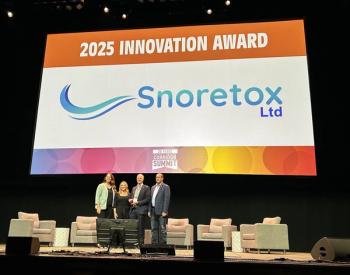
Therapy for feline bronchopulmonary disease (asthma) (Proceedings)
Feline asthma is one of the most common bronchopulmonary diseases in cats and is responsible for substantial morbidity and occasional mortality. It is an IgE mediated hypersensitivity response against what otherwise would be harmless environmental Aeroallergens.
Feline asthma is one of the most common bronchopulmonary diseases in cats and is responsible for substantial morbidity and occasional mortality. It is an IgE mediated hypersensitivity response against what otherwise would be harmless environmental aeroallergens. Exposure to an allergen allows for production of allergen-specific IgE formation. Those IgE antibodies then bind to mast cells on respiratory mucosal surfaces. Upon re-exposure to allergen, IgE on the surface of the mast cell bind allergen and send an intracellular signal to trigger mast cell degranulation. Mediators that are either immediately released from granules or later synthesized within mast cells are major contributors to signs of asthma. Inflammation in the airways leads to cellular infiltration (mostly eosinophils), increased mucus production, bronchoconstriction, and creates permanent architectural changes in the lung called airway remodeling. All of these lead to clinical signs of asthma.
Clinical presentation of the asthmatic cat
Any cat may have asthma, although it is most commonly diagnosed in young to middle aged cats and may be more common and/or severe in Siamese cats. Typical clinical signs include some combination of coughing, wheeze, and intermittent respiratory effort or distress. Signs are often slowly progressive but can cause severe bronchoconstriction and sudden dyspnea. Differential diagnosis for respiratory distress include congestive heart failure or pleural effusion, while differential diagnosis for cough include pulmonary parasites and infectious or non-infectious bronchitis.
Although routine blood, urine, and fecal tests help evaluate overall health and rule out other disease, radiography and airway lavage are the most useful tests. Peripheral eosinophilia is common (~20%) but non-specific. Asthma cannot be ruled out because of normal thoracic radiographs but many cats have some combination of a bronchial lung pattern and evidence of hyperinflation (eg, increased lucency or flattening and caudal displacement of the diaphragm). Airway lavage typically demonstrates increased numbers of eosinophils and sometimes neutrophils. Lavage samples should be cultured (including Mycoplasma). Heartworms can cause a very similar clinical picture even in the absence of mature worms, but unfortunately diagnosis of feline heartworm associated respiratory disease (HARD) is very difficult and no specific therapy is available even if the condition could be recognized.
Therapeutic options for feline asthma
Therapeutic strategies for the treatment of asthma can either focus on suppressing the inflammation and bronchoconstriction once they have developed, or can attempt to turn off the aberrant hypersensitivity reaction before it causes airway inflammation and bronchoconstriction.
Traditional therapies
Traditional therapy for asthmatic cats has relied on environmental modulation as well as injectable and oral corticosteroids and bronchodilators. If the allergen causing asthma can be identified, and it is possible to remove it from the environment, the driving force for the induction of asthmatic events is removed. More often than not, the allergen is either ubiquitous or the patient is sensitized to multiple allergens, making it impossible to completely remove all allergens. Hepa-type filters can be beneficial in reducing the load or indoor aeroallergens. It is also important to decrease exposure to environmental airborne irritants, especially smoke, dusts (eg, kitty litter), and aerosols.
Cats with asthma are not equivalent, and should not be treated as identical. Some cats are usually quite well with only occasional episodes of cough, while other cats have constant cough and frequent episodes of respiratory distress. It may be useful to decide if a cat has mild, moderate, or severe disease for the purposes of treatment.
The mainstay of therapy for asthmatic cats or people is the reductions of inflammation, most often via treatment with glucocorticosteroids (GC). The inflammatory component of asthma must be addressed to prevent progression of disease and irreparable damage to the lungs. GC should be used in the initial management of this disease and with flare-ups, but GC actions are not immediate. Because GC can produce serious adverse effects they should be tapered to the lowest effective dose to control clinical signs and may be discontinued during periods of disease remission. For routine oral use prednisolone is preferred over prednisone for cats. Inhalant GC therapy allows direct application of GC to airways with minimal systemic absorption, allowing maximal respiratory effect with minimal systemic effect. Metered dose inhalers containing GC (eg, fluticasone or flunisolide) can be adapted for use in asthmatic cats. Inhalant therapy is certainly advantageous in cats with conditions for which oral GC are relatively contraindicated, such as diabetes mellitus or cardiomyopathy.
Traditionally, veterinarians monitor therapy only by the owner's description of clinical response. A more objective approach would be assessment of airway eosinophilic inflammation. Collection of airway lavage fluid by BAL in a "blind" fashion (ie, without a bronchoscope) is simple, inexpensive, and safe in cats with stable respiratory function. Pre-treatment with terbutaline further reduces the risk of this procedure. It would be reasonable to evaluate airways by BAL prior to any significant modification of anti-inflammatory drug therapy.
Bronchodilators enhance airflow to the lungs by relaxing airway smooth muscle and allowing an increase in airway diameter. However, the use of bronchodilators as monotherapy is not advocated. Asthma is not just a disease associated with airway hyperreactivity; inflammation plays a key role in both clinical manifestations as well as permanent airway remodeling. These drugs are often described as "rescue" medications since they rescue the ability to breathe but they do not address the actual cause of airway narrowing. Therefore, these rescue drugs should be used in combination with other drugs to address the cause (eg, GC inhibit airway inflammation).
Bronchodilators, including methylxanthines like aminophylline and theophylline or beta-2 agonists like terbutaline can be administered to cats orally or parenterally. Parenteral terbutaline (0.01mgkg SQ) can be life-saving during asthmatic crisis. More recently, administration of the beta-2 agonist albuterol by metered dose inhaler has been advocated. In people with asthma, overuse of inhalant bronchodilators may increase morbidity and mortality. The most commonly used inhalant albuterol is composed of two racemic enantiomers, one of which causes bronchodilation while the other may cause paradoxic inflammation and bronchoconstriction. Single enantiomer levalbuterol (Xopenex HFA) is now available for use and may be associated with fewer adverse reactions. For now, it seems wise to use inhaled albuterol only as needed and to focus routine treatment on inflammation. For cats requiring routine bronchodilation, the author prefers oral extended duration theophylline.
Alternative therapies
Unfortunately, traditional therapies are not always adequate. In these cases, alternative and additional therapies can be considered. When using treatments for which efficacy is as of yet undemonstrated in controlled clinical trials, the clinician must remain acutely aware of potential adverse effects and costs and explain the unproven nature of these therapies to the client.
Serotonin is a mediator of smooth muscle contractility in feline airways. Antagonizing the effects of serotonin by using cyproheptadine has theoretical promise, but studies have failed to support a benefit from cyproheptadine in an experimental model of feline asthma. This treatment should be safe, but efficacy is undocumented.
Leukotriene (LT) antagonists such as zafirlukast and montelukast are useful in many but not all people with asthma. Although these drugs have been used in cats, there is no proven utility for these drugs in feline asthma. Unlike in humans, cysteinyl LTs do not appear to be an important mediator in feline asthma. Also, administration of zafirlukast to cats with experimentally induced asthma had no beneficial effects on reducing airway inflammation or hyperreactivity.
Other methods can be used to suppress or alter the immune response. Cyclosporin decreases IL-2 production, leading to inhibition of T cell proliferation. It has been used in severely asthmatic people as a GC sparing anti-inflammatory drug but its routine use is not advocated because of the potential for severe adverse effects. Cyclosporin has achieved mixed reviews in experimental models of feline asthma.
A modification of a molecule derived from salivary glands (feG-COOH; pronounced "feg") which can be administered orally showed some initial promise in relief of airway inflammation in cats. Unfortunately, this early promise was not supported in a two week trial in cats with experimentally induced allergic airway disease.
To date, allergen-specific immunotherapy is the only treatment associated with a cure of allergic disease. Identification of allergens to which the patient has been sensitized is critical but difficult in practice. Intradermal skin testing seems to be the most sensitive method of allergen identification but is hampered by many medications (especially steroids) that may be given concurrently. It must also be remembered that the presence of IgE to a particular allergen does not mean that that specific allergen is responsible for disease. Protocols for "rush immunotherapy" delivered over two days either by subcutaneous injection or mucosal administration resulted in amelioration of airway inflammation in an experimental model of feline asthma. Trials in naturally affected cats are just beginning.
Tricking the immune response into believing that it must deal with bacterial infection by administering CpG motifs may turn the immune system away from a Th2 response that promotes asthma. In the future, CpG motifs may be used as "adjuvants" for other forms of immunotherapy such as rush immunotherapy.
Suggested readings
Broide D, et al. Systemic administration of immunostimulatory sequences mediates reversible inhibition of Th2 responses in a mouse model of asthma. J Clin Immunol 2001;21:175-182.
Costello J, et al. Summary: the pharmacology of leukotrienes in asthma. Adv in Prostaglandin, Thromboxane Leukotriene Res 1994;22:263-268.
DeClue AE, et al. feG-COOH blunts eosinophilic airway inflammation in a feline model of allergic asthma. feG-COOH blunts eosinophilic airway inflammation in a feline model of allergic asthma. Inflamm Res.58(8):457-62, 2009.
Eberhardt J, et al. Chronic use of the immunomodulating tripeptide feG-COOH in experimental feline asthma. Vet Immunol Immunopath, 132(2-4):175-80, 2009.
Lee-Fowler TM, et al. Comparison of intradermal skin testing (IDST) and serum allergen-specific IgE concentrations in experimental feline allergic asthma. In press, Vet Immunol Immunopath.
Lee-Fowler TM, et al. Evaluation of subcutaneous versus mucosal (intranasal) allergen-specific rush immunotherapy in experimental feline asthma.Vet Immunol Immunopath, 129(1-2):49-56, 2009.
Leemans J, et al. A pilot study comparing the antispasmodic effects of inhaled salmeterol, salbutamol and ipratropium bromide using different aerosol devices on muscarinic bronchoconstriction in healthy cats.Vet J 2008; 178:236-245.
Mellema M, et al. Urinary leukotriene levels in cats with allergic bronchitis. American College of Veterinary Internal Medicine Forum 1998;724.
Mitchell RW, et al. Differential effects of cyclosporine A after acute antigen challenge in sensitized cats in vivo and ex vivo. Br J Pharmacol. 123(6):1198-204, 1998.
Norris C, et al. Cysteinyl leukotrienes in urine and bronchoalveolar lavage fluid in an experimental model of feline asthma. Am J Vet Res 2003;64:1449-1453.
Padrid P, et al. Cyproheptadine-induced attenuation of type-I immediate-hypersensitivity reactions of airway smooth muscle from immune-sensitized cats. Am J Vet Res 1995;56:109-115.
Padrid P, et al. Cyclosporine A inhibits airway reactivity and remodeling after chronic antigen challenge in cats. Am J Respir Crit Care Med.154(6 Pt 1):1812-8, 1996.
Reinero CR, et al. Effects of drug treatment on inflammation and hyperreactivity of airways and on immune variables in cats with experimentally induced asthma. Am J Vet Res. 66:1121-1127, 2005.
Reinero CR. et al. Rush immunotherapy in an experimental model of feline allergic asthma. Vet Immunol Immunopath. 110(1-2):141-53, 2006
Reinero CR. et al. Enantiomer-specific effects of albuterol on airway inflammation in healthy and asthmatic cats. Int Arch Allergy Immunol. 150(1):43-50, 2009.
Reinero CR. Asthma in humans and cats: is there a common sensitivity to aeroallergens in shared environments? Environ Res. 109(5):634-40, 2009.
Reinero CR. et al. Adjuvanted rush immunotherapy using CpG oligodeoxynucleotides in experimental feline allergic asthma. Vet Immunol Immunopathol. 121(3-4):241-50, 2008.
Schooley EK, et al. Effects of cyproheptadine and cetirizine on eosinophilic airway inflammation in cats with experimentally induced asthma. Am J Vet Res. 68:1265-71, 2007
Newsletter
From exam room tips to practice management insights, get trusted veterinary news delivered straight to your inbox—subscribe to dvm360.






